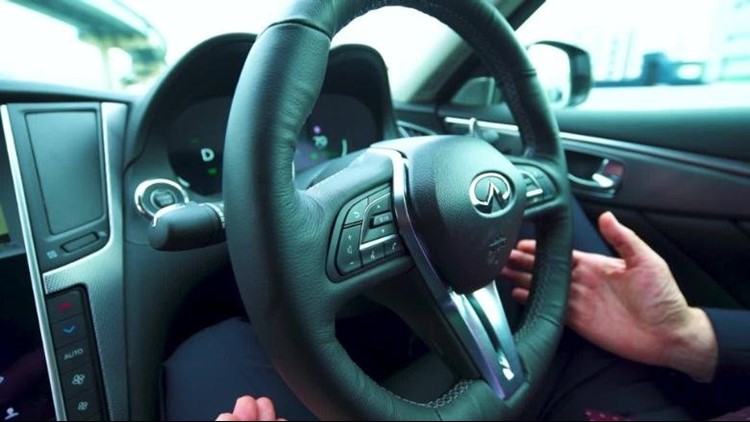This isn’t a science fiction movie. It’s a driverless car cruising down a Japanese highway.
Last month, motoring giant Nissan installed its latest autonomous drive technology on its Infiniti Q50 model. CNN went for a test drive in the car in the capital of Tokyo.
The modified car was equipped with 12 sonars, 12 cameras, nine radar sensors and six laser scanners to enhance the accuracy of its solo journey.
The test drive saw the vehicle travel 12 miles (20 kilometers) without human interference. The journey ended where it started.
While there was a driver in the usual spot, their hands were off the wheel and feet off the pedals.
“What we have tried to attain with this vehicle is human-like, comfortable driving — so no jerking, (no) sudden movements,” says Tetsuya Iijima, general manager at Nissan’s strategy group. “If people don’t (feel comfortable) in the vehicle it will not be accepted.”
Nissan hopes to roll out the new tech in time for the Tokyo Olympics in 2020.
‘Very precise and accurate’
This isn’t Nissan’s first rodeo.
In 2013 and 2015, it successfully carried out test drives of hands-free vehicles on the streets of Tokyo. And in 2016 and early 2017, further test runs were conducted in Silicon Valley and London, respectively.
Meanwhile, its ProPilot system — a semi-autonomous “single-lane freeway autonomous driving technology” — is already fitted in several Nissan vehicles on the market, such as the Serena minivan and the X-Trail. In 2018, it will be available with the Leaf electric vehicle.
The ProPilot can keep a car within its lane on a highway by detecting road markings, and stops and starts automatically, in sync with traffic flows on congested roads.
With the latest autonomous technology, tested in Tokyo last month, a car can make tight turns, squeeze through small spaces and even join a freeway without human intervention — essentially, it can provide a “door-to-door” service without the driver having to intervene.
How much this technology will cost once it hits the market is still unknown, says Tomoyuki Akiyama, Nissan’s spokesperson.
Whether the autonomous drive technology will eventually be available as a system on its own, or come as an existing feature of a vehicle is undecided.
“However, we are automakers, so the technology will probably come with the car,” he adds.
So what exactly are you getting with a system like this — and just how accurate is it?
“For this model, we have installed a very precise and accurate positioning system,” explains Iijima. “A regular GPS has just around a 5-meter accuracy range at best; however, this vehicle has a positioning system that’s accurate to 30 centimeters.”
At its production facility, Nissan is already using a self-driving vehicle that is capable of towing other cars.
The road ahead
So how close is Nissan to launching a driverless system by 2020?
Iijima says that Nissan would have to ensure the vehicle is compliant with Japanese motoring regulations — but that’s not all. While the car is capable of driving from point A to B, Nissan needs to increase reliability levels, and the number of sensors on the car.
“There are many discussions (in which) the government, and insurance companies, should be involved,” he explains. “We need to have some consensus to show or prove this vehicle is safe. Everyone is thinking of a realistic way to show the safety of the vehicle.”
Ultimately, the team at Nissan want to present an autonomous vehicle that is “sustainable (in) the future”.
“That is what we want to show in 2020.”



